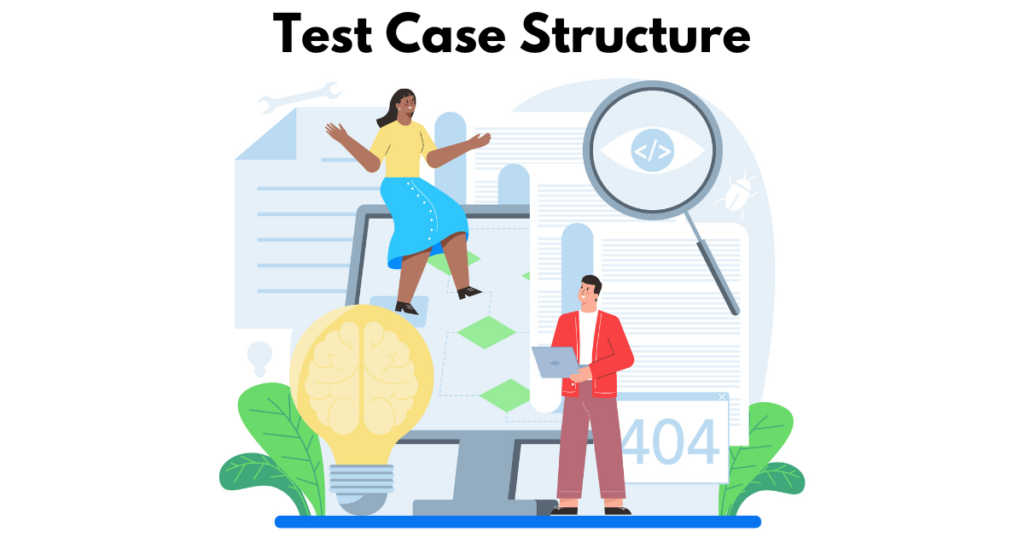When you're deep into building software, it's super important not to underestimate the value of a great search feature. No matter if you're working on a huge online store or a basic in-house database, how easily and quickly users can find what they need has a big impact on whether they'll stick around or get frustrated and leave.
Making search work smoothly and intuitively should be a top priority. This is where testing enters the spotlight. Crafting comprehensive test cases for search functionality ensures that your product not only meets the foundational user requirements but excites and engages users.
By adopting best practices from ContextQA's approach, developers and testers can fine-tune this aspect to near perfection. Let's explore how to develop test cases that cover all necessary bases, keeping in mind the intricacies and importance of robust search capabilities.
Importance of Test Cases for Search Functionality

Ensuring Quality and Reliability
The user experience can seriously make or break whether people stick with your software. Users expect search to be blazing fast and spit out on-point results.
If it craps out or gives crummy results, they'll get pissed and probably just ditch the app/website. Testing the crap out of search isn't just about the nitty-gritty code stuff - it's crucial for making sure users are satisfied by getting exactly what they need lightning-quick.
Going all-in on different real-world search scenarios makes the feature robust enough to handle anyone's weird queries and requirements, boosting overall usability and keeping people happy.
Impact on User Experience
The user experience (UX) can be greatly enhanced by a well-functioning search system. Users expect quick and relevant results when they use the search feature, and any malfunction could lead to frustration and a decreased likelihood of using the software again.
Test cases for search functionality not only help in fine-tuning the mechanics of the search process but also improve user satisfaction by ensuring the results are relevant and delivered promptly.
Moreover, testing different user scenarios ensures the search feature is robust, catering to diverse user needs and preferences, which in turn boosts the overall usability of the software.
Best Practices for Creating Test Cases
Clear and Concise Test Objectives
The first fundamental step is clearly defining the goal for each and every test case. Don't try to test too many aspects at once. Instead, laser in on very specific factors like response speed, result accuracy and relevancy, how it handles funky characters or misspellings, sorting/filtering functionality, and so on.
Stating that clear, focused purpose upfront keeps the testing streamlined and makes it glaringly obvious whether the case passed or failed expectations. Well-defined objectives are also crucial for aligning the whole team on exactly what's being verified at each stage.
Test Scenarios Coverage
To comprehensively assess the search functionality, it's crucial to cover a wide range of test scenarios. These might include:
- Single Keyword Searches: Verify the system's response to simple queries.
- Multiple Keywords: Test how it handles queries with multiple keywords.
using boolean operators, keyword prioritization, overall accuracy.
- Special Characters: Cover searches with non-alphanumeric chars like hyphens, underscores, punctuation. Make sure it doesn't error out.
- Case Sensitivity: Validate if results differ when keywords use uppercase vs lowercase. Define expected consistent behavior.
- Phrase Searches: Evaluate the system’s ability to handle phrases and complete sentences.
By encompassing a variety of scenarios, test cases can uncover specific shortcomings or strengths in the search functionality, guiding further improvements and ensuring a robust search feature.
Data Validity and Boundary Testing
Data validity and boundary testing are critical in evaluating the effectiveness of search functionality. Testers should check how the system handles edge cases and boundary conditions, such as extremely long search queries or queries that return zero results.
Validating data also includes ensuring illegal inputs (like SQL injection attempts) do not crash or manipulate the system in unintended ways.
Such testing not only secures the search function from potential security threats but also ensures it continues to operate efficiently, even when faced with unusual or unexpected input, thus maintaining a seamless user experience.
Real-World Examples from ContextQA

Test Case Structure
When designing test cases for search functionalities, ContextQA adopts a structured format that ensures thoroughness and clarity. Each test case starts with a unique identifier and a short title that reflects the functional aspect being tested.
This is followed by a step-by-step action list which defines what the tester will do, and expected results indicate what the system should return after each action. For instance, a test case for a search feature might look something like this:
- ID: TCSF001
- Title: Verify Search Functionality with Valid Input
- Test Steps:
1. Enter 'apple' in the search bar.
2. Press the search button.
- Expected Result: The system displays a list of products related to 'apple'.
Test Case Execution
The execution phase is critical, involving actual interaction with the software by testers using the defined test cases. Each step is performed as outlined, and testers record the outcomes meticulously.
Data during this stage might involve screen captures, response times, and system logs which are important in investigating issues. ContextQA emphasizes the need for repeating tests under various conditions to ensure consistency.
For instance, the team would execute the same search tests using different keywords, different user roles, or even different devices to monitor the system’s adaptability and performance.
Results Analysis and Reporting
After executing the test cases, ContextQA analysts review and collate the data into reports that highlight any deviations from expected outcomes.
Each finding is documented with evidence attached to support further investigation or to validate the system’s functionalities.
These reports not only help in identifying bugs but also in understanding user behavior and enhancing the overall usability of the search feature. Reporting in ContextQA includes:
- Detailed descriptions of each issue found.
- Screenshots or logs as evidence.
- Severity ratings to prioritize bug fixes.
- Recommendations for improvements.
These structured documents then guide developers in making precise adjustments and stakeholders in making informed decisions about the software product's readiness.
Through meticulously executed test case structures, execution, and detailed reporting, ContextQA ensures that search functionalities not only meet the technical specifications but also deliver a user-friendly experience that aligns with user expectations.
Book a Demo and experience ContextQA testing platform in action with a complimentary, no-obligation session tailored to your business needs.
Conclusion and Takeaways
Designing comprehensive test cases for search functionality is crucial in ensuring that software applications deliver a seamless and efficient user experience.
Focusing on multiple dimensions such as data input, search operations, and user interface can significantly enhance the quality and reliability of your software.
- Ensure coverage of various input scenarios to anticipate real-world usage.
- Test not only text search capabilities but also consider advanced functionalities like filters and auto-suggestions.
- Prioritize user experience by assessing the intuitiveness and responsiveness of the search feature.
Remember, each set of test cases should be adaptable, as search functionalities may differ based on the specific requirements of your software project.
Adopting best practices in software testing and incorporating regular feedback loops will foster continuous improvement and innovation in your development processes. Happy Testing!
Also Read - Common Screen Resolutions | What are they & How to Test?
